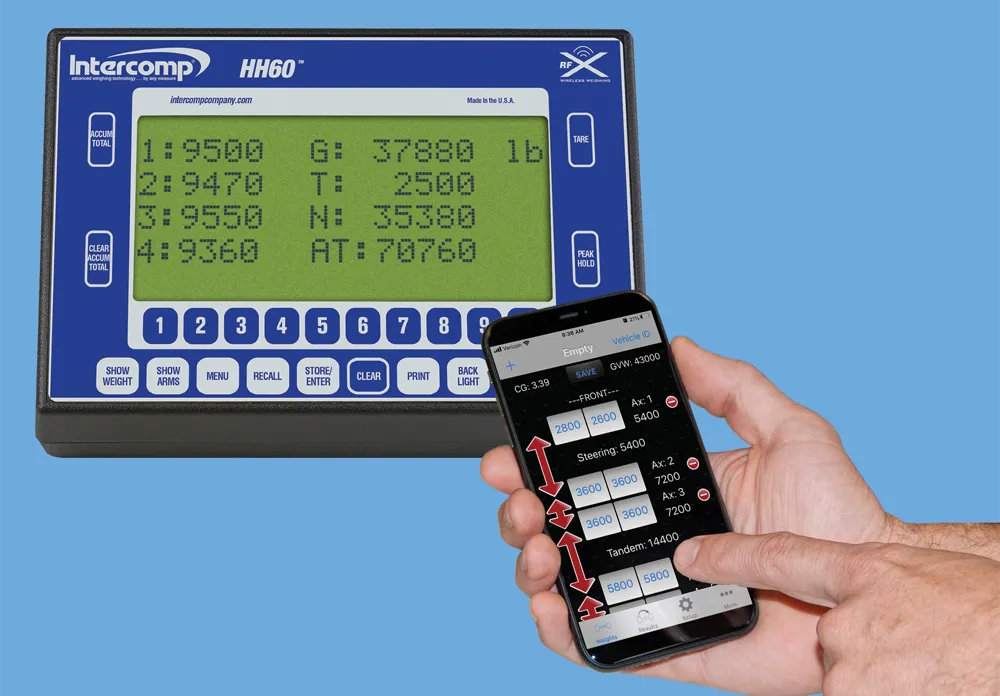
Live axle weight data is now securely transmitted from the indicator to a user’s Bluetooth-enabled iOS mobile device, noted Intercomp, a global manufacturer of portable vehicle weighing and measurement products based in the US city of Minneapolis.
Wireless communication from scale pads to the indicator will continue to use Intercomp’s secure RFX Wireless Weighing technology. The new Bluetooth chip simply allows data sharing with one Apple mobile device. In this case, a mobile device can, when needed, easily become a second scale indicator.
Like RFX communication, only those with the proper digital credentials can access weight data from an iPad or iPhone. During the connection process, radio and encryption settings are required to access the data stream. This ensures only approved users view axle weight information.
Part numbers used to identify and order the HH60 will not change following the Bluetooth addition. The ability to fully control up to six RFX scales within a 90m line-of-sight radius, peak hold function and the ability to store and print weight records are some of the functions that will continue to be available with this indicator.
Intercomp also recently announced that it had made IntercompWIM Delta software available to the global industrial scale market. The software is a stand-alone interface for customers to take advantage of the efficiency and cost savings of weigh-in-motion technology while more accurately tracking bulk material inventory – all in real time.
IntercompWIM Delta automates weight collection to compare and calculate gross and net weights for vehicles hauling incoming and outgoing goods. It compares records with matching vehicle IDs to calculate net, tare and gross weights.
The system uses these values to determine the weight of incoming and outgoing materials. This data is then able to be forwarded to a third-party inventory software for real-time tracking or exported to a spreadsheet. Vehicle use and overweight alerts are also saved and can be recalled or exported for later use.
IntercompWIM Delta controls scales monitoring for up to two lanes of traffic, such as dedicated inbound and outbound lanes. It simplifies how WIM scale technology is used for daily operations of nearly any type of business, says the company.
When paired with Intercomp WIM scales, the software completes a stand-alone system for small or large facilities. The software is available for purchase through any scale dealer that sells Intercomp’s line of weigh-in-motion Strip Sensors, LS-WIM and portable LS630-WIM using a PC.







